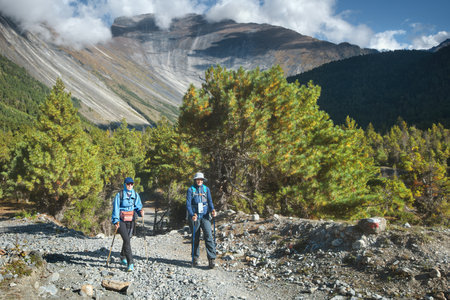1. Introduction: Why British Weather Demands More
Ask any seasoned rambler or weekend hiker in the UK, and you’ll hear the same refrain: British weather is as unpredictable as it is relentless. From sideways rain on Dartmoor to sudden downpours in the Lake District, our trails are a proving ground for outdoor kit. It’s not just about getting wet; it’s the persistent damp, biting winds, and rapid changes that can turn a pleasant stroll into an endurance test. That’s why when it comes to rucksacks, standard ‘waterproof’ labels often miss the mark here. Products designed for continental climates or occasional showers simply don’t cut it on a muddy Peak District path after three hours of drizzle. In this article, we dig into what truly constitutes a weather-proof rucksack fit for Britain – and why breathability is just as crucial as keeping water out.
Understanding Waterproof vs. Water-Resistant Rucksacks
When it comes to tackling the unpredictable British weather, knowing the real difference between a waterproof and a water-resistant rucksack is far more than just semantics—it’s about keeping your kit dry during a proper downpour on Dartmoor or a drizzly Lake District hike. In day-to-day UK usage, these terms are often used interchangeably, but for anyone venturing outdoors, especially when the heavens open, the technicalities matter.
Waterproof rucksacks are designed to keep out persistent rain and even heavy splashes, thanks to sealed seams, robust membranes like Gore-Tex, and specialist zips. On the other hand, water-resistant options can withstand brief showers or light drizzle but will eventually let water seep through under sustained exposure. Here’s how these classifications usually stack up in practical British hiking situations:
| Feature | Water-Resistant | Waterproof |
|---|---|---|
| Light Rain Protection | Yes (short term) | Yes (long term) |
| Heavy Rain Protection | No | Yes |
| Sealed Seams | Rarely | Standard |
| Specialist Zippers/Flaps | No/Minimal | Often Included |
| Breathability | Usually Higher | Varies—can be less breathable unless premium fabric used |
| Typical Usage in UK Trails | Pleasant walks, city use, fair-weather hikes | Multi-day treks, wild camping, exposed routes like Scottish Munros |
UK brands and seasoned hillwalkers interpret these categories with due scepticism. “Waterproof” here is expected to survive relentless sideways rain, not just a light mizzle. Many British manufacturers specify hydrostatic head ratings (measured in mm) to indicate true waterproof performance—look for figures above 1,500mm for reliable protection. Ultimately, understanding these terms in the context of real-world British weather is essential if you want your sandwiches and spare socks to stay bone dry.

3. Breathability: The Quiet Essential
If you’ve ever set out on a British ramble with a so-called waterproof rucksack, only to find your back soaked in sweat or your kit damp from condensation, you’ll know why breathability is more than a marketing buzzword—it’s a genuine necessity. The UK’s famously fickle weather doesn’t just throw rain at us; it also brings fluctuating temperatures and humidity that can make even the most robust adventurer uncomfortable. A truly breathable rucksack allows moisture vapour (that stuffy, clammy feeling) to escape from inside while keeping the rain out. This means less sticky discomfort on your shoulders and lower back, and far less risk of arriving at your destination with soggy maps and sandwiches. For long days on the fells or quick dashes between Tube stations and trailheads, prioritising breathability alongside waterproofing means staying dry inside and out—a small but vital detail for anyone who values comfort on our beloved, unpredictable British trails.
4. Materials and Coatings: What Actually Works in the UK
If you’ve hiked, cycled, or commuted through a British drizzle, you’ll know not all rucksacks are created equal. The real difference comes down to the materials and coatings used—some repel a sudden downpour, while others quietly soak through. Here’s a practical look at what actually works for the UK’s famously unpredictable weather.
Common Fabrics Used in British Rucksacks
| Fabric | Main Features | Typical Use |
|---|---|---|
| Ripstop Nylon | Lightweight, tear-resistant, quick-drying | Daypacks, hiking rucksacks |
| Polyester | UV-resistant, affordable, less water-absorbent than cotton | Casual rucksacks, school bags |
| Cordura (Nylon Blend) | Highly durable, abrasion-resistant, heavier weight | Expedition packs, cycle couriers’ bags |
Waterproofing Coatings & Treatments
| Coating/Treatment | Description | Effectiveness in UK Weather |
|---|---|---|
| PU (Polyurethane) Coating | A plastic film applied inside fabric; provides waterproof barrier but can reduce breathability over time. | Good for heavy rain; may crack after years of use. |
| DWR (Durable Water Repellent) | A surface treatment that causes water to bead up and roll off. Needs reapplication after long exposure or washing. | Great for showers and splashes; not enough for sustained rain on its own. |
| PVC Coating/Lining | Tough and fully waterproof but lacks breathability; often makes bags stiffer. | Excellent for full waterproofing but can get sweaty inside. |
Taped Seams: The Unsung Hero of Dry Gear
No matter how good your fabric is, water finds its way through needle holes. Taped seams—where waterproof tape is heat-sealed over stitching—are essential for genuinely weatherproof rucksacks. If your pack doesn’t have them, expect leaks during a proper British soaking.
The Verdict: What Works Best on UK Trails?
The most reliable combinations for British trails tend to be ripstop nylon with a robust PU coating and taped seams. DWR treatments add extra protection but need upkeep. For urban commutes or short walks, polyester with DWR might suffice—but for multi-hour treks across Dartmoor or the Lakes, invest in packs that clearly specify seam taping and reinforced coatings. In short: check the label, read the fine print, and don’t just trust the marketing spiel.
5. Tested on the Trail: Rucksacks in Proper British Weather
If you want to separate marketing from true performance, nothing beats a British downpour for a field test. We’ve spoken to hikers who have trudged through the Peak District’s sodden moorlands, scrambled along the wind-lashed ridges of Snowdonia, and faced that infamous sideways rain in the Lake District—where staying dry feels more like wishful thinking than an achievable goal.
Surviving Sodden Moorland
Anyone who’s slogged across Dartmoor or the Yorkshire Dales knows that persistent drizzle is only interrupted by full-on sheets of rain. Here, rucksack fabrics like ripstop nylon with a high hydrostatic head rating are put to the test. Many seasoned walkers report that even so-called ‘waterproof’ packs soon succumb at the seams or zips if left unprotected; pack covers are helpful but often become waterlogged or blown away on exposed ground. For peace of mind, most Brits line their main compartments with dry bags or bin liners—a pragmatic hack rather than a failure of technology.
Windy Fells & Blustery Summits
On exposed fells—think the Brecon Beacons or Helvellyn—the challenge isn’t just rain, but relentless wind driving moisture into every possible gap. Here, well-designed flaps over zippers and tightly cinched roll-tops come into their own. Breathability becomes crucial: hikers notice that packs with poor ventilation rapidly lead to clammy backs and sweat-soaked kit, regardless of the weather outside. Mesh back systems and ventilated harnesses earn high praise for keeping things bearable when racing up steep slopes.
The Sideways Rain Test
No British kit test is complete without mention of horizontal rain—where water seems determined to enter your rucksack from all angles. Walkers recount tales of arriving at bothies with surprisingly dry gear thanks to welded seams and waterproof zippers, while others sheepishly admit defeat as they wring out sodden maps and sandwiches. The consensus? No rucksack is invincible, but those built for British conditions—double-stitched seams, robust PU coatings, and minimalist external pockets—give you a fighting chance.
Real-world feedback from UK trails makes one thing clear: while no rucksack is truly invulnerable to our legendary weather, thoughtful design choices and sensible packing strategies make all the difference between misery and a warm cuppa at journey’s end.
6. Buying Tips: Choosing Your Next Weather-Proof Bag
When it comes to investing in a rucksack that’s fit for Britain’s notoriously changeable weather, it pays to know what really matters—both on the label and in real-life use. Here’s a straightforward guide to help walkers, commuters, and outdoor enthusiasts choose their next weather-proof bag with confidence.
Understand the Waterproof Ratings
Labels often shout about being “waterproof”, but check for the hydrostatic head rating (measured in mm). For UK use, aim for at least 1500mm for everyday commuting and upwards of 3000mm for proper hillwalking. Also, look for taped or welded seams and water-resistant zips—these features prevent leaks where rain loves to sneak in.
Breathability Matters—Especially If You’re Active
If you’re hiking or cycling, breathability is key. Check the MVTR (Moisture Vapour Transmission Rate), usually listed in g/m²/24hr—the higher, the better for letting out sweat. Mesh back panels and vented straps also help keep your back dry on muggy days or steep climbs.
Pocket Placement and Accessibility
For British trails and unpredictable showers, easy-access pockets for waterproofs, snacks, or a map are invaluable. Try bags on in-store with your usual kit inside; make sure you can reach what you need without taking the whole bag off in a downpour.
Fit and Adjustability: Don’t Overlook Comfort
The best rucksack is the one you barely notice wearing. Look for adjustable chest and hip straps—especially if you’ll be carrying heavier loads or walking longer distances. Women-specific fits are worth considering too, as they often offer better comfort for different body shapes.
A Few Insider Tips from Regular UK Walkers
Don’t get seduced by gimmicks—rain covers are handy but not a substitute for good fabric construction. If you commute by bike, high-vis details and reflective strips make sense during dark winter evenings. For wild country walkers, reinforced bases handle rough ground better than ultralight options. Finally, always try the bag on with weight before buying; even a short walk round the shop helps spot pressure points.
Whether you’re braving Scottish drizzle or London’s urban showers, choosing wisely means your gear—and your spirits—stay dry no matter what British weather throws at you.


